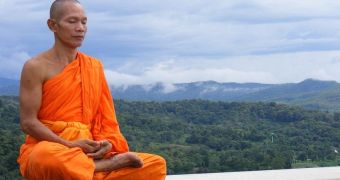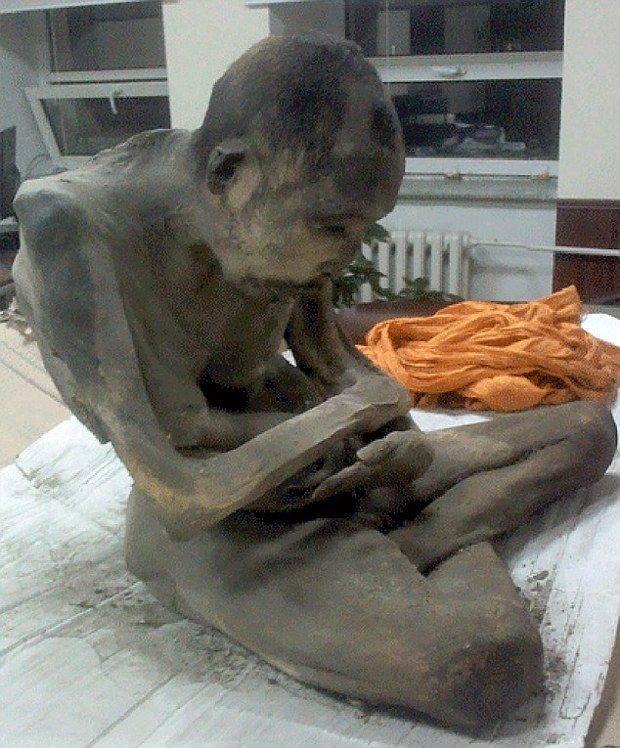Earlier this week, on January 27, the centuries-old mummified remains of a Buddhist monk were discovered in Mongolia's Songinokhairkhan province. What's fascinating is that, when found, the monk was still seated in a lotus position.
Thus, it is said that, when found, the monk looked as if he were meditating. What's more, experts who have so far had the chance to examine the corpse say that, despite lying in hiding for hundreds of years, it is surprisingly well preserved.
This is all the more astonishing given the fact that, all things considered, chances are that the man was not embalmed or anything of the sorts following his death. Otherwise put, his body naturally mummified in the lotus position it was found in rather than begin to decay.
Researchers have no idea who the Buddhist monk might be
As mentioned, the mummified body of the Buddhist monk, shown in the photo below, was discovered in Mongolia's Songinokhairkhan province. The thing is that, for the time being at least, it is unclear exactly how and where the corpse was found.
What is known is that, when recovered, the mummy was covered in cattle skin. Researchers say that, judging by its appearance and that of the animal skin that served to protect it, the corpse most likely dates back to 200 years ago, give or take a couple of decades.
Having been found, the mummified monk was transported to Ulaanbataar, Mongolia's capital city. Here, it will be closely inspected by scientists hoping to figure out who he was, maybe even gain a better understanding of why his remains did not decay.
Some say that the remains might belong to Dashi-Dorzho Itigilov, a renown Buryat Buddhist lama of the Tibetan Buddhist tradition. Others believe the mummy to be that of one of Dashi-Dorzho Itigilov's teachers. Hopefully, researchers will manage to solve this riddle.
Dozens of other monks remained in a meditative pose after death
Historians say that, as surprising as this may sound, the fact of the matter is that this monk is not the first so far found to have become mummified in a meditative position. On the contrary, nearly 30 monks are known to have remained frozen in a meditative pose by means of self-mummification.
Ancient Origins tells us that, to mummify their own bodies, these monks started with eating nothing but nuts, seeds and fruits for 1,000 days. The goal was to rid themselves of all their body fat. They then embraced a diet of bark and roots for another 1,000 days and finally drank a poisonous tea.
This tea not only caused them to lose most of their body fluids but also served to kill whatever bacteria would have ate away at their body following their death. After this, the monks locked themselves in a tomb, assumed a meditative pose and waited for their death. Although hundreds of monks are said to have attempted mummifying themselves in this manner, just a few dozen actually succeeded.

 14 DAY TRIAL //
14 DAY TRIAL // 

